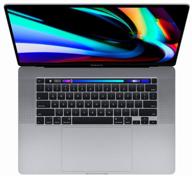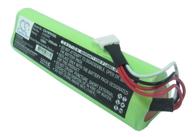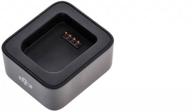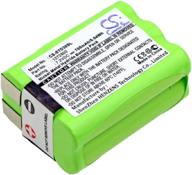
Review on Western Digital WD Green SATA 240 GB SATA WDS240G2G0A Solid State Drive by Micha Niemczyk ᠌

Normal product, but wanted more for the money.
Took the disc back to the store. They have a disk defined, but at the same time theycomuld not read my files. Reformatted. The fact that my data has disappeared, as it were, does not bother either (fortunately, I did not have time to write down anything valuable in 1 day). In general, they gave me the disk back, saying that everything works. How to use it, I don't know. Scary. The feeling, like 16 years ago from IBM DTLA disks, is when something is buggy, but it’s not clear what is buggy, and it’s not always buggy, so the store won’tcomnfirm the defect. : the real write speed of a used disk (with fragmentation of the space available for recording) is about 15 mb / s on large files. In the dry residue: 1. Same price as HDD 2. Speed at 90% full like HDD (reading is faster, writing is slower). 3. Increased risk of problems. Everything above is the first impression, below is after 2 months of use. 1. There were no more failures in 2 months. 2. Smart showed 129 bad blocks (see photo), asked WD if it was normal or not. WD was told to send them for a replacement/refund. It’s far to send them, - he took the disc to the store where he bought it. The disk was in service for a week with a claim for broken blocks. Service verdict: approve replacement/return. I made a replacement, because despite the shortcomings, there was a desire to take the disk from me, the new disk has 297 bad blocks (see photo). And what was the point of changing? Theycomuld just say, they say this is the norm, I would not waste my time in vain. 3. Judging by this review (see smart screenshot, parameter A9), their disk has 151 bad blocks: obemom-120-i-240-gbajt-inogda-cena-reshaet in the 240GB version, and about 70 broken blocks in the 120GB version. That is, what's interesting. Most of these disks seem to have bad blocks. And the service recognizes this as a defect. Do you want to change, do you want to return. If you want to use at your own risk.Complete freedom of choice.
- Cheap if your time spent is considered free. The speed of reading small files is 10 times higher than that of a traditional HDD. I cannot rule out that any WD SSD can be changed or returned due to broken blocks - more details in the comments.
- In theory, after about a year of constant auto-ates of any software, free space is quite fragmented (because a lazy controller is in no hurry to do garbage collection), and performance is likely to decrease to the level of a regular laptop hdd (10 times faster in reading small files, and up to 10 times slower in writing large files). 1) I put it on the second disk (not immediately write valuable data), formatted it, put the file recording, went for a walk, returned, I have: - the disk has fallen off. - After a reboot, Windows does not start (although there is more Windows fault here). - when you try to enter the bios, the pc hangs 2) I downloaded the WD SSD Dashboard™ program - I think I'll see what's with the disk (after it was reanimated, though losing all the data). At first, the program told me that some functionality would not work with Windows 8.1 (like put 10), and then it completely crashed because I didn’t have an opengl 2.0 driver. The question is - what is such an urgent need for a regular program in opengl 2.0 ? The answer is, I really don't think so. 3) The record is not fast at all. The speed of writing 1MB of files to a blank disk is at the level of an 8-year-old disk at 5400. Writes smaller files faster than hdd. Larger ones are slower. And then, it speeds to an empty disk. If the disk is filled with medium files by 100%, and then 10% of randomly selected files are deleted. Then after that the speed of writing a large file will be about 15Mb / s. It seems that the disk does not have garbage collection organized, although I checked that the trim command is enabled in Windows. As a result, I have a complete loss of data, but then I worked for about a month without problems. The reason for the loss of data, I assume, is the desynchronization of the caches.
New products
Comments (0)
Top products in 🎒 Laptop Bags, Cases & Sleeves

Backpack Xiaomi Mi City Backpack 2 dark gray

38 Review

Graphic Tablet XP-PEN Deco 01 V2 Black

62 Review

16" Apple MacBook Pro 16 Late 2019 3072x1920, Intel Core i7 2.6 GHz, RAM 16 GB, DDR4, SSD 512 GB, AMD Radeon Pro 5300M, macOS, RU, MVVJ2RU/A, space gray

58 Review

Xiaomi Classic Business Backpack Blue Backpack

56 Review
Another interesting products

🔋 VINTRONS FLUKE 3105035 Ti20-RBP Replacement Battery - Ti10, Ti20, Ti25, TiR Models

3 Review

🔋 DJI Osmo Battery Health Analyzer

3 Review

🔌 Dell AAZ60 Latitude 14 7470 E7470 Compatible Battery Cable Replacement - Efficient J60J5 Battery Wire Cord, 49W6G 049W6G C020029500 - Black

3 Review

🔋 Tri-Tronics G3 Field, G3 Pro Battery

4 Review

